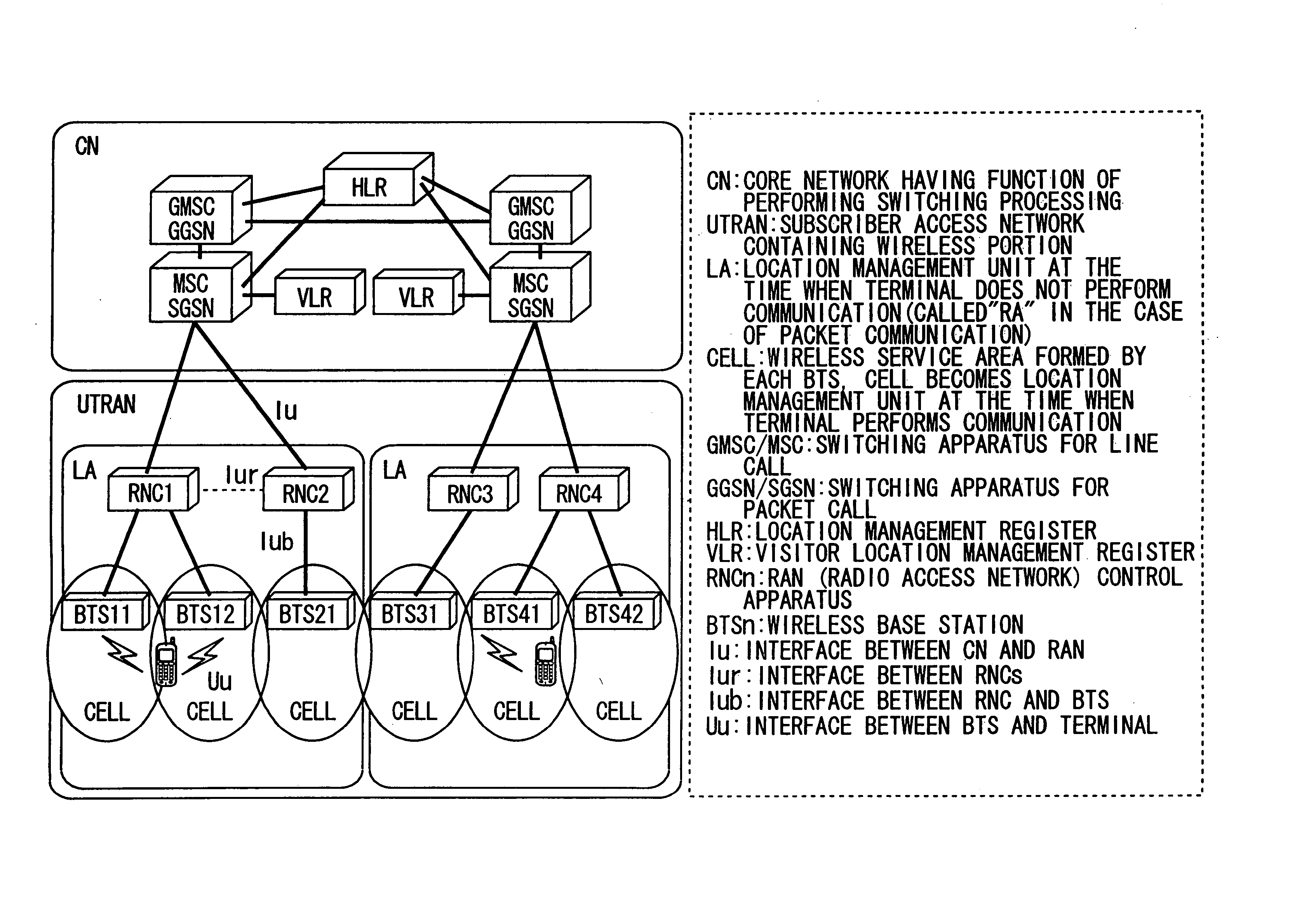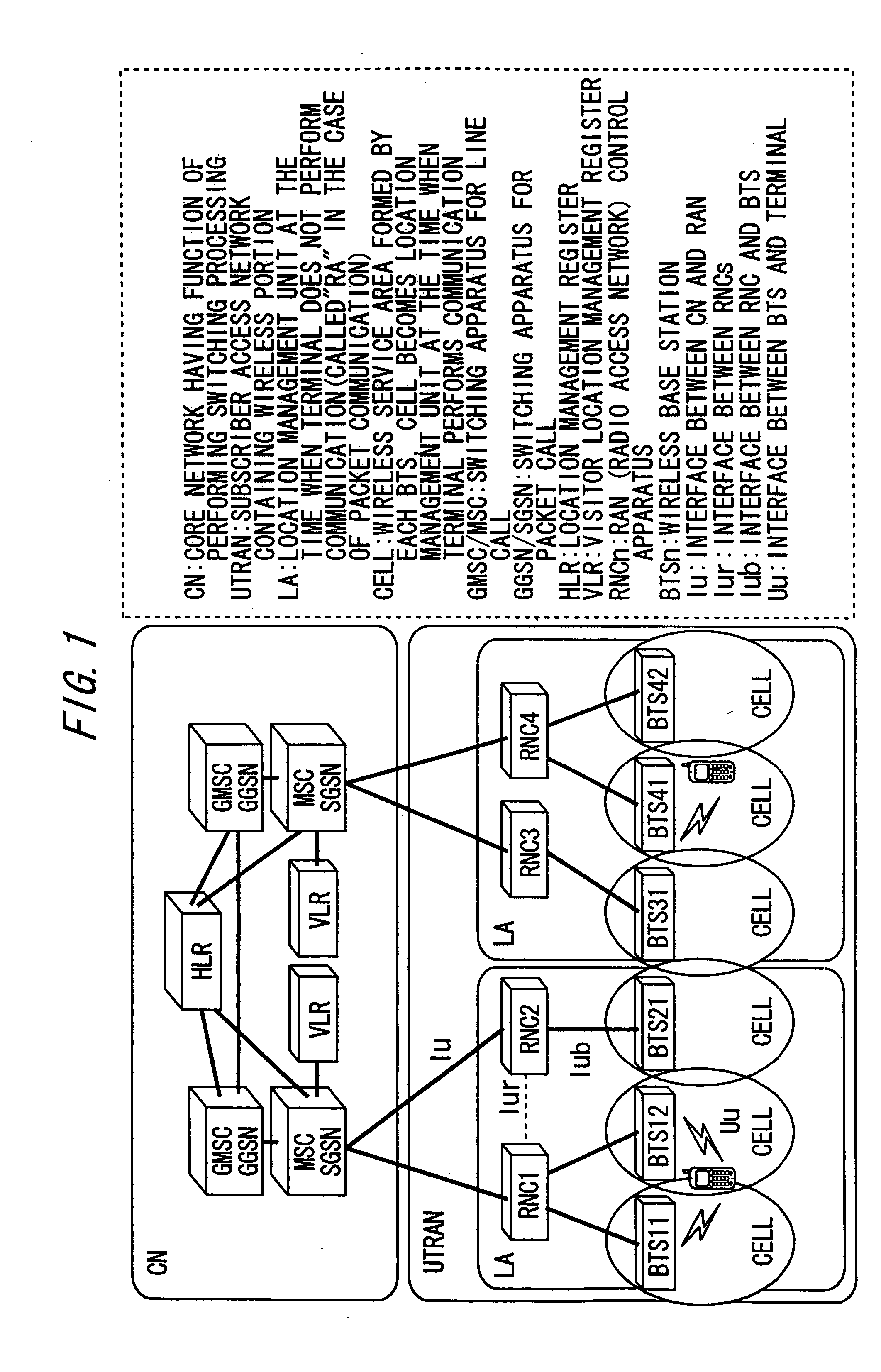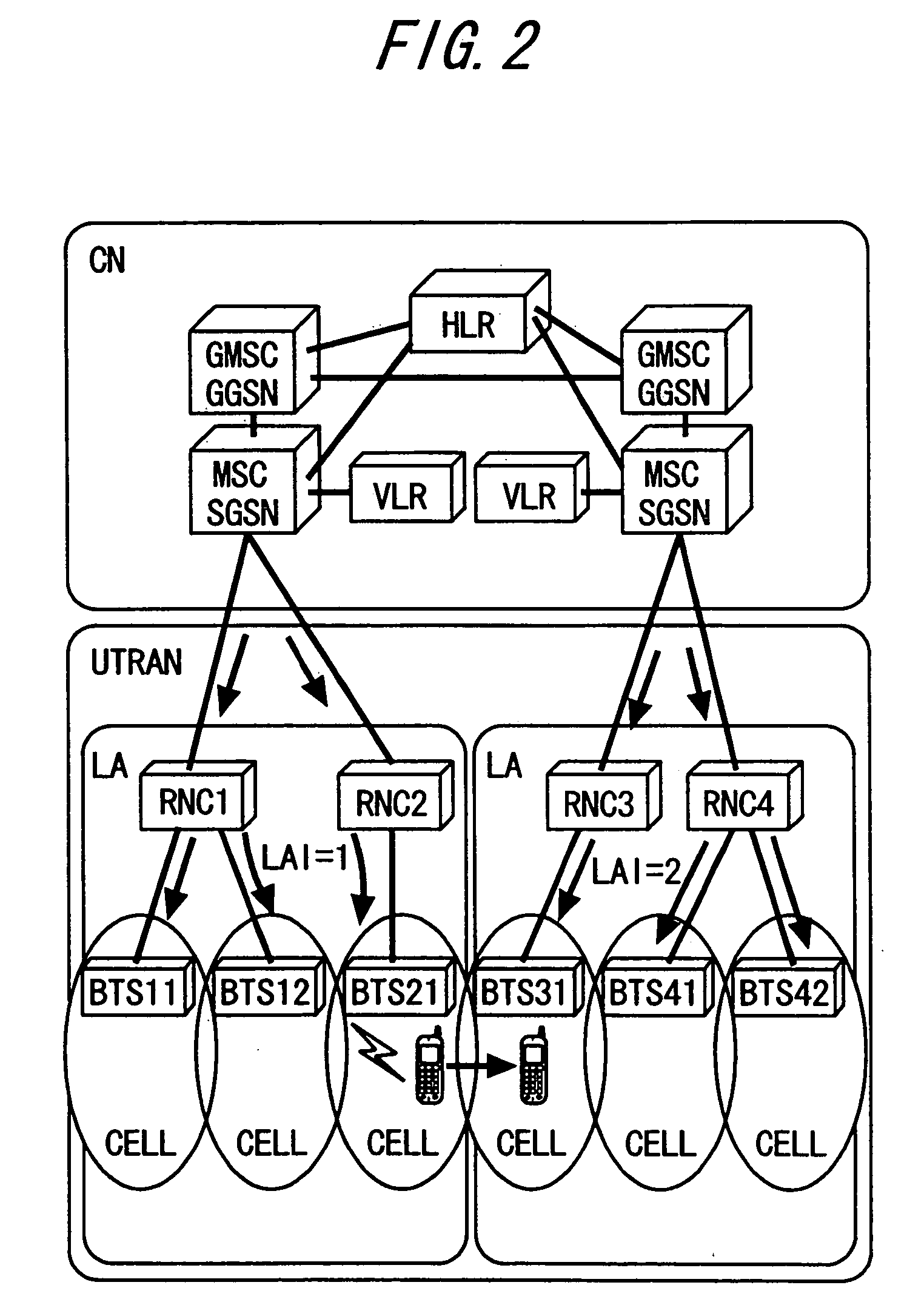Terminal state control system
a control system and terminal technology, applied in the field of network systems, can solve the problems of difficult to distinguish with ease, difficult to install many antennas in a narrow area, and difficult to install base stations of imcs or simple imcs described above only for the convenience of mobile telephone companies
- Summary
- Abstract
- Description
- Claims
- Application Information
AI Technical Summary
Benefits of technology
Problems solved by technology
Method used
Image
Examples
embodiment 1
[0243] [Embodiment 1]
[0244] Next, as Embodiment 1 of the first embodiment mode of the present invention, processing (location registration) in the case where the registration table is arranged in a VLR will be described. FIGS. 14A and 14B show the layered LAIs in the first example, FIGS. 15A, 15B, 16A, and 16B each concretely show VLR / HLR registration contents in the first example, and FIGS. 17 to 26 are each a sequence diagram showing processing executed when a terminal A or B shown in FIG. 14 moves to any one of points 1> to 6> in FIG. 14 (corresponding to the points “J” to “N” in FIG. 10).
[0245] In FIG. 14A, as the first example, there is shown an access network (UTRAN) containing an LA allocated an LAI=10 and having a conventional system structure, and an LA allocated an LAI=20 and having a structure according to the present invention.
[0246] The LA having the LAI=20 contains a new RNC (NRNC) 1 serving as a base station control apparatus according to the present invention, and ...
embodiment 2
[0315] [Embodiment 2]
[0316] Next, as Embodiment 2 in the first embodiment mode of the present invention, processing (location registration) in the case where the registration table is arranged in the NRNC will be described. FIGS. 27A and 27B show a network structure in Embodiment 2, FIGS. 28A, 28B, 29A, and 29B each concretely show the VLR / HLR registration contents in Embodiment 2 and the registration table provided for the NRNC, and FIGS. 30 to 38 are each a sequence diagram showing processing executed in the case where the terminal A or B shown in FIG. 27A exists at each one of points 1> to 6> shown in FIG. 27A (corresponding to the points “J” to “N” in FIG. 10).
[0317] The network of Embodiment 2 shown in FIG. 27A has the same structure as the network of Embodiment 1 shown in FIG. 14A. In Embodiment 2, however, the network structure is changed so that an NRNC 4 is provided with a conversion table 5 and has a registration table 6 (FIGS. 14B, 28B and 29B) in place of the VLR 2. Acc...
second embodiment
[0431] [Effect of Second Embodiment Mode]
[0432] According to the second embodiment mode, it is possible to obtain the following effects. (1) The registration table is used for a judgment about the transmission destination of a call termination message, so that it becomes possible to reduce the processing for transmitting unnecessary call termination messages and to alleviate loads placed on the apparatuses on the core network side, the base station management apparatuses, and the lines therebetween. (2) Information showing a base station, via which a call termination message should be transmitted to a destination, is added to the message, so that it becomes possible to eliminate the processing for transmitting unnecessary call termination messages from a base station management apparatus to base stations other than the destination base station and to alleviate loads placed on the base station management apparatus, the base stations, and the lines therebetween. (3) The registration t...
PUM
 Login to View More
Login to View More Abstract
Description
Claims
Application Information
 Login to View More
Login to View More - R&D
- Intellectual Property
- Life Sciences
- Materials
- Tech Scout
- Unparalleled Data Quality
- Higher Quality Content
- 60% Fewer Hallucinations
Browse by: Latest US Patents, China's latest patents, Technical Efficacy Thesaurus, Application Domain, Technology Topic, Popular Technical Reports.
© 2025 PatSnap. All rights reserved.Legal|Privacy policy|Modern Slavery Act Transparency Statement|Sitemap|About US| Contact US: help@patsnap.com



